BEYOND THE FINAL FRONTIER

We are at a significant moment: NASA predicts that in 2030 humans will reach Mars. As of May 2018 3,793 exoplanets have been discovered, which can potentially or may already be supporting life. The dream of humans traveling further to outer space are becoming more tangible. But still, very few people have ever been beyond the atmosphere of the Earth. Outer space exists mostly in our imaginations or in scientific data. The vast majority of us can’t touch it, hear it or exist within it…yet.
When we look around, however, we start to find many signs of outer space already here in the daily life of Thailand: maps of the stars can be found inside local temples, a UFO beaming out the dirt of our stained clothing appears on a laundry detergent packet, even the days of the week are named after the planets, the sun and moon. This exhibition then asks, how does imagining other worlds teach us about Earth, ourselves, and our place in the universe?
When we look around, however, we start to find many signs of outer space already here in the daily life of Thailand: maps of the stars can be found inside local temples, a UFO beaming out the dirt of our stained clothing appears on a laundry detergent packet, even the days of the week are named after the planets, the sun and moon. This exhibition then asks, how does imagining other worlds teach us about Earth, ourselves, and our place in the universe?
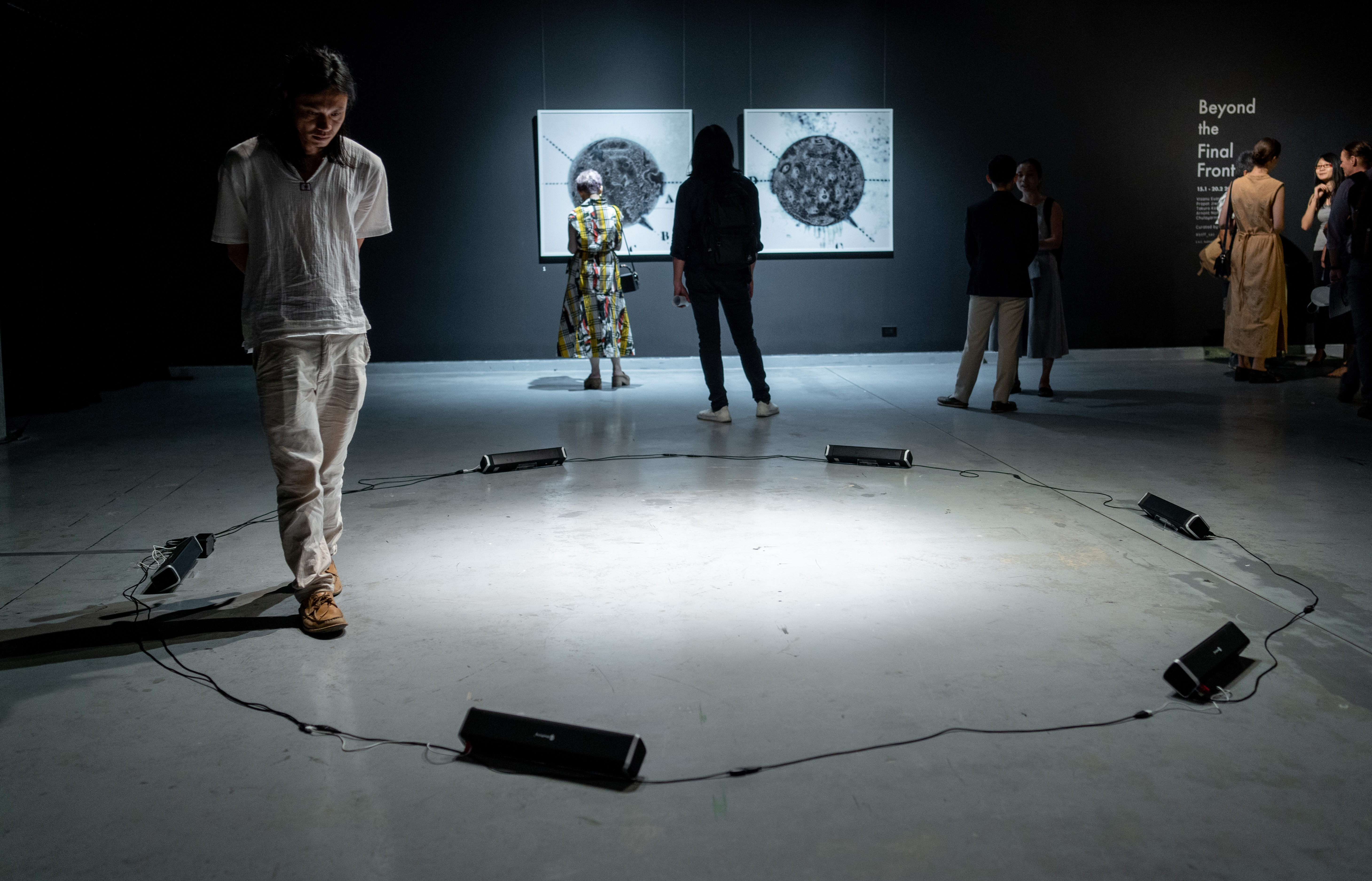
Beyond the Final Frontier 2019 (installation view), S.A.C. Subhashok The Arts Centre, Bangkok. Photo: Preecha Pattara
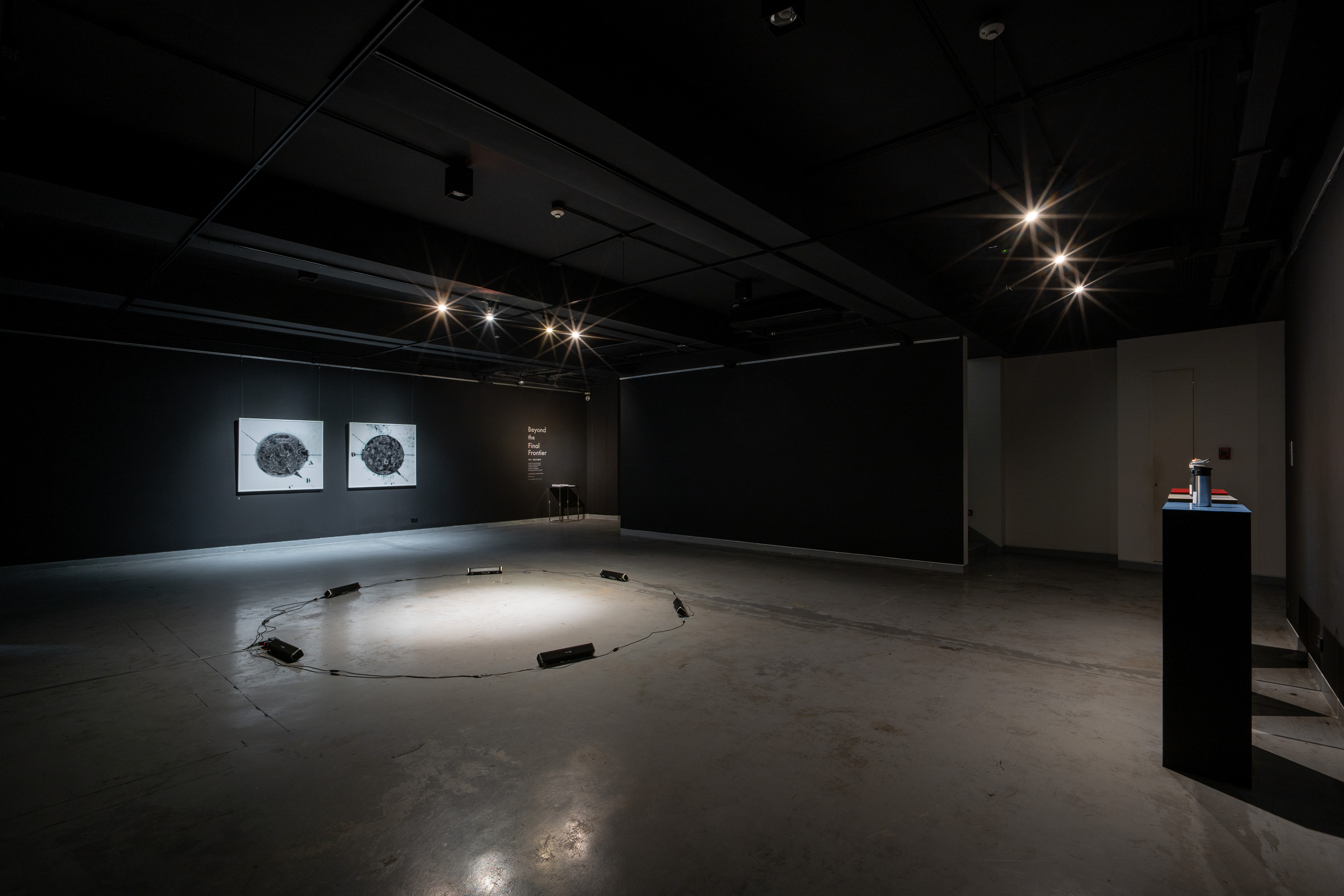
Beyond the Final Frontier 2019 (installation view), S.A.C. Subhashok The Arts Centre, Bangkok. Photo: Preecha Pattara

Prapat Jiwarangsan Eclipse at Mars 2017. Photograph, scraped on surface, 115 x 115cm. Courtesy the artist. Photo: Preecha Pattara
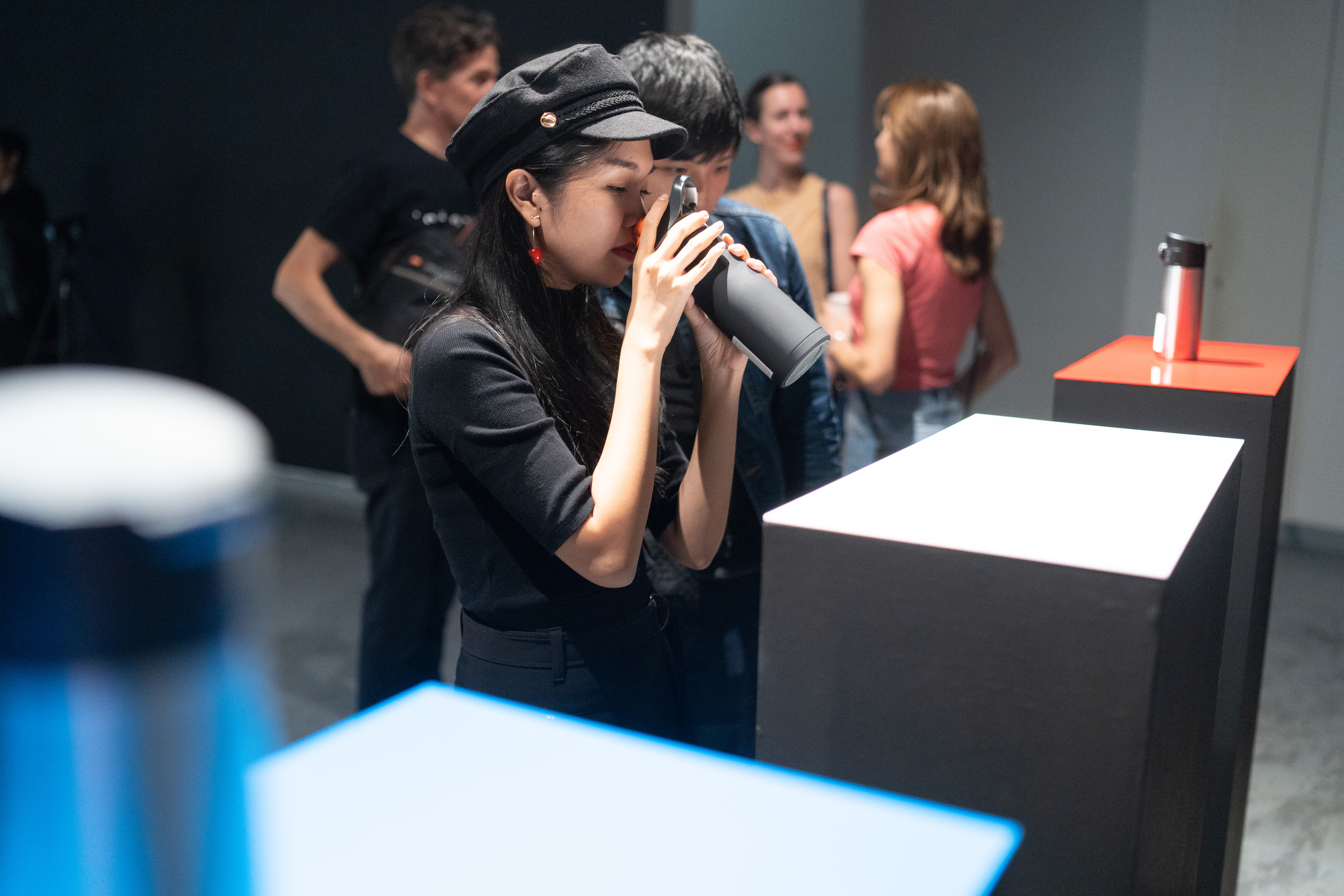
Beyond the Final Frontier 2019 (installation view), S.A.C. Subhashok The Arts Centre, Bangkok. Photo: Preecha Pattara
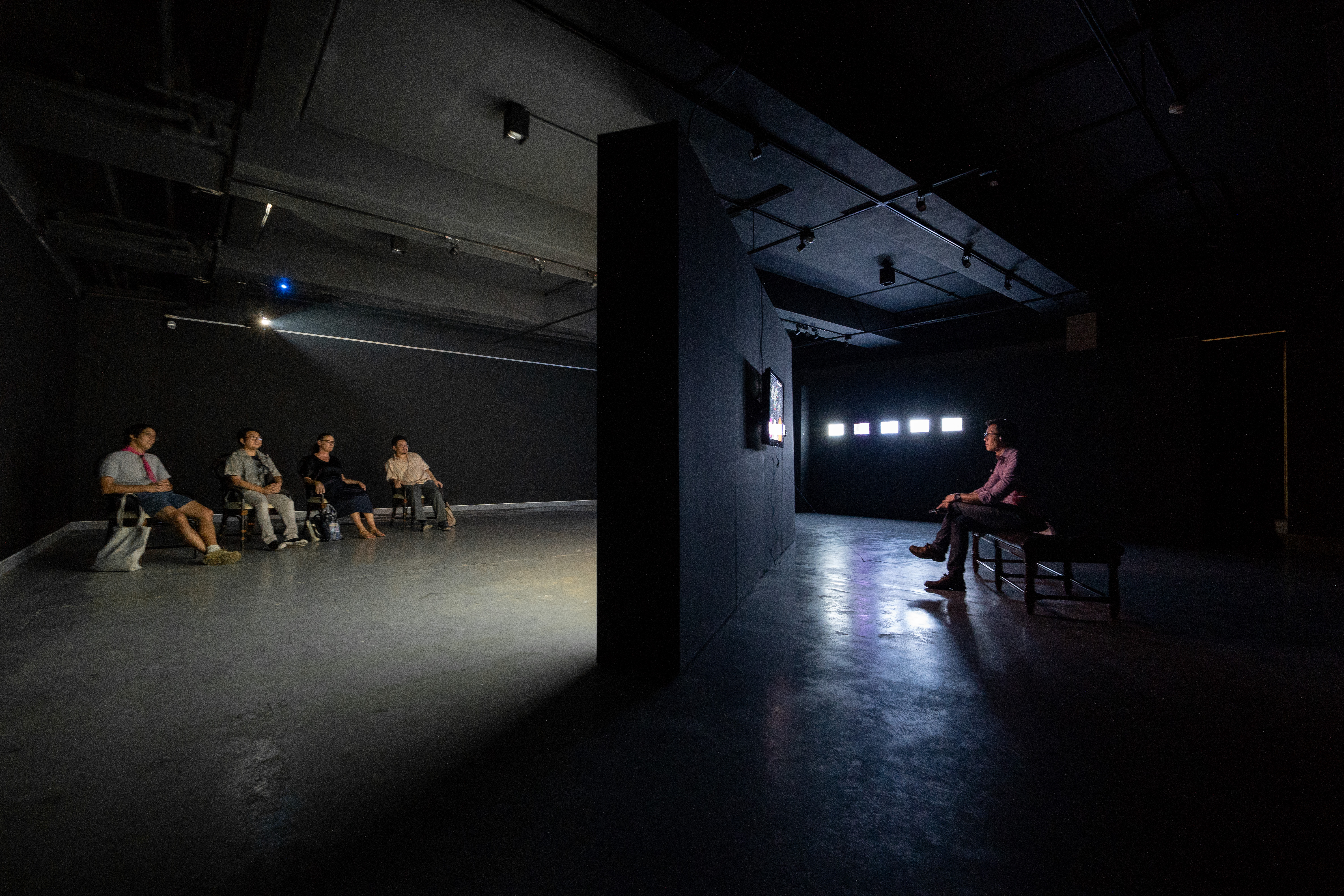
Beyond the Final Frontier 2019 (installation view), S.A.C. Subhashok The Arts Centre, Bangkok. Photo: Preecha Pattara

Beyond the Final Frontier 2019 (installation view), S.A.C. Subhashok The Arts Centre, Bangkok. Photo: Preecha Pattara

Beyond the Final Frontier 2019 (installation view), S.A.C. Subhashok The Arts Centre, Bangkok. Photo: Preecha Patta
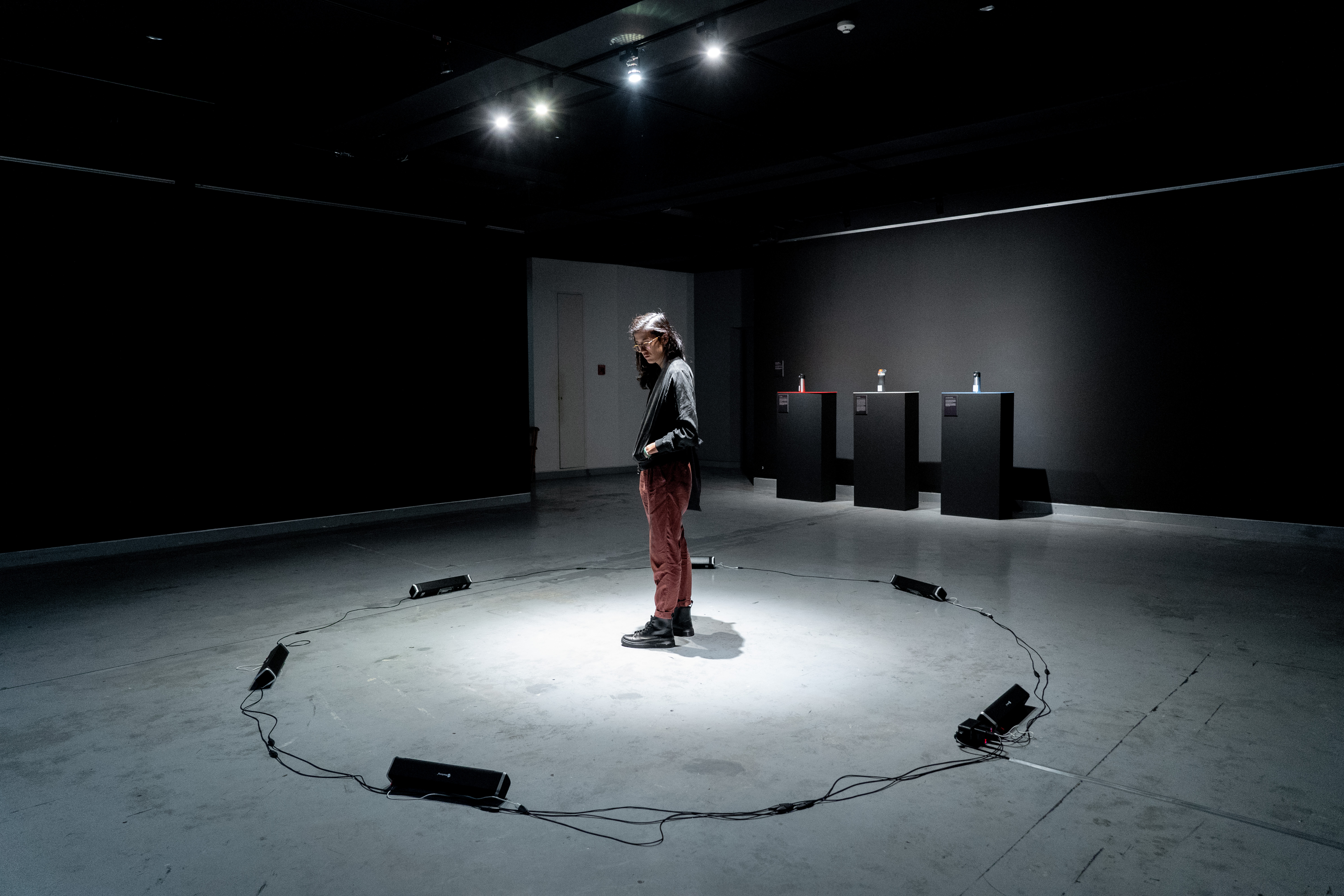 Arnont Nongyao Eciov 2018 (install view). 6 speakers, 6 media players, 6 sound files. Courtesy the artist. Photo: Preecha Pattara
Arnont Nongyao Eciov 2018 (install view). 6 speakers, 6 media players, 6 sound files. Courtesy the artist. Photo: Preecha Pattara
Arnont Nongyao
Eciov (2018) is a soundscape of outer space created especially for this exhibition. Arnont Nongyao is an avid collector of sounds, with a particular interest in the concept of ‘vibration’. Through careful listening, he hears voices inside the buzzing of bees, the rush of a waterfall, or the humming of car engines in a traffic jam. These sounds of daily life and the voices that he hears within them, are amplified for this installation. Arnont aims to bring on an awareness of the ‘codes’ and ‘language’ around us so that we can tune into potential hidden forms of communication that we are not usually aware of.
Visitors are invited to slowly move around the circle of speakers, listening carefully for moments of harmony and discord and secret languages inside them.
![]()
![]()
![]()
![]()
Visanu Earchukiati Scents from Space 2019. Aromas, alcohol, containers. Dimensions variable. Courtesy Visanu Euarchukiati. Photos: Preecha Pattara


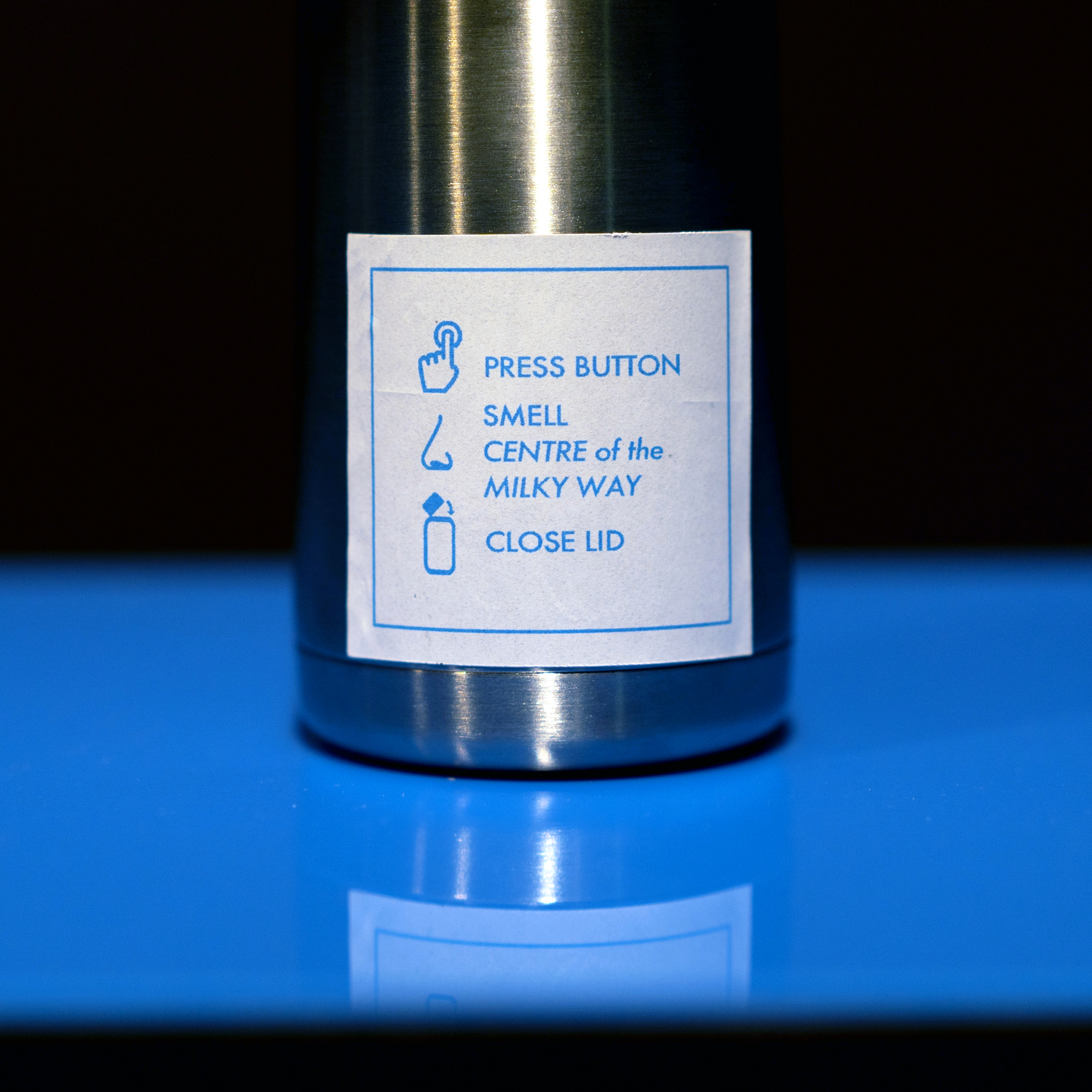
Visanu Euarchukiati
For this exhibition, independent academic and astronomy researcher Visanu Euarchukiati, developed and sourced a series of Scents from Space based on the known smells of chemical substances found in space.
Titan
Titan is the largest of all Saturn’s moons. There are trace amounts of other hydrocarbons, such as ethane, diacetylene, methylacetylene, acetylene and propane, and of other gases. In lab experiments NASA scientists matched the spectral signature the Cassini spacecraft detected in Titan's atmosphere. The material contains aromatic hydrocarbons that include nitrogen, a subgroup called polycyclic aromatic nitrogen heterocycles (PAH) which smells like gasoline.
Space Rose
NASA, International Flavors and Fragrances (IFF) and the Wisconsin Center for Space Automation and Robotics (WCSAR) collaborated on an experiment, which was taken on STS-95 on 29 October 1998. A miniature rose with 2 buds, cultivated by IFF, was sent in a small Astroculture chamber. Astronauts took samples of the oils from the roses. After the shuttle returned, it was found that the roses actually made fewer oils while in space, but had a more "floral rose aroma" than the same roses on Earth. The space rose scent is used in Shiseido Zen.
Centre of the Milky Way
The search for organic molecules was made by pointing a radio telescope to the giant molecular cloud Sagittarius B2 at the center of the Milky Way. There was no trace of amino acid in the thousands of signals, but ethyl formate C3H6O2 was found. Ethyl formate gives the flavor of raspberries, and the smell of fermented molasses, commonly found in rum.
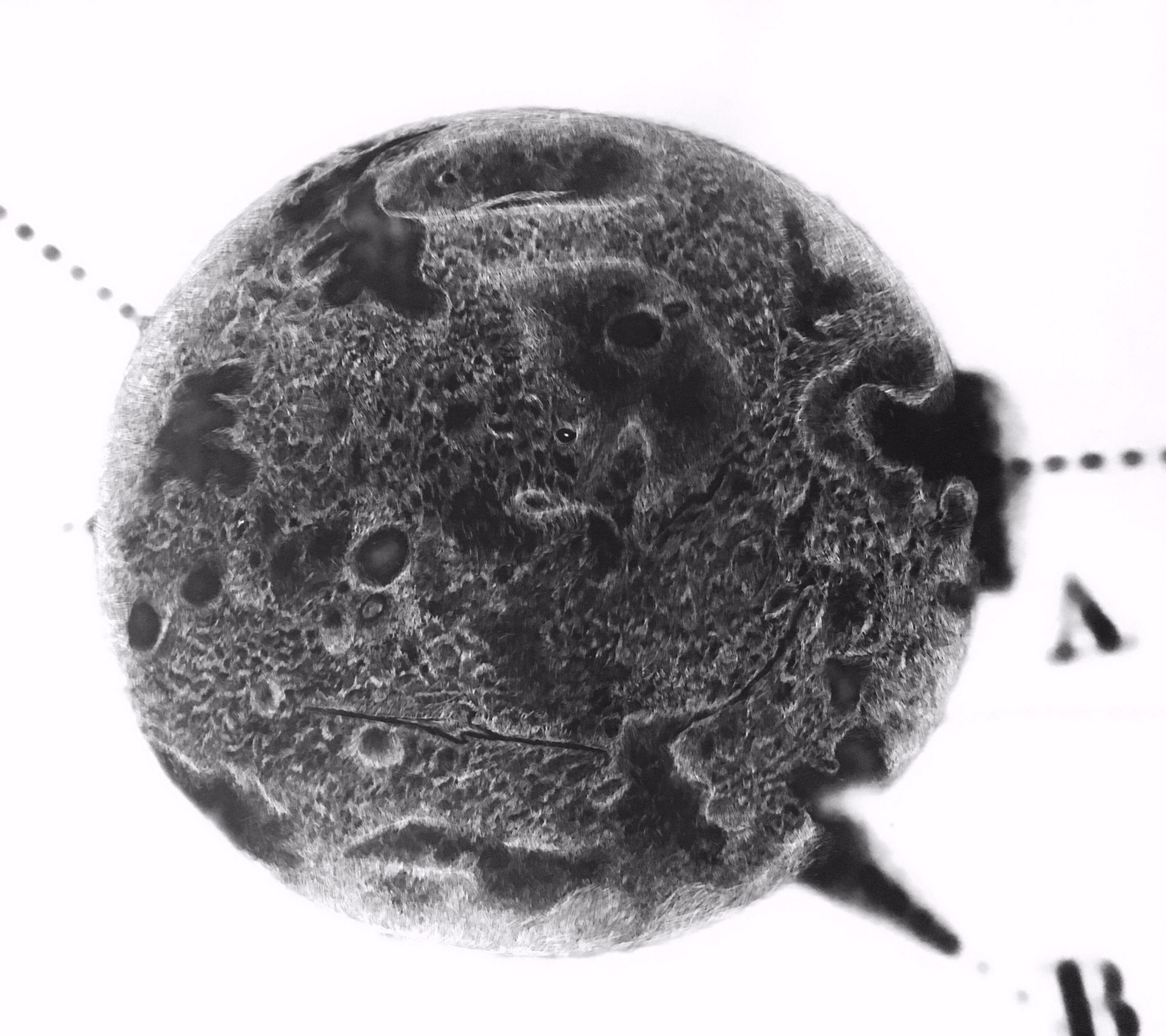
Prapat Jiwarangsan Eclipse at Mars 2017. Photograph, scraped on surface, 115 x 115cm. Courtesy the artist.
Prapat Jiwarangsan
Eclipse at Mars (2017) is a series of large-scale photocopies of archival photographs that document the solar eclipse of 1868. This solar eclipse is known as ‘The King of Siam’s eclipse’ after King Mongkut (1804-1868) calculated and predicted the solar eclipse earlier and more accurately than any other international astronomer. Prapat Jiwarangsan has then etched a landscape of Mars over the top of each photocopy, based on images from NASA. This gesture blends together past, present and future by overlaying the historic moment of King Mongkut’s scientific breakthrough with a potential new life on Mars.
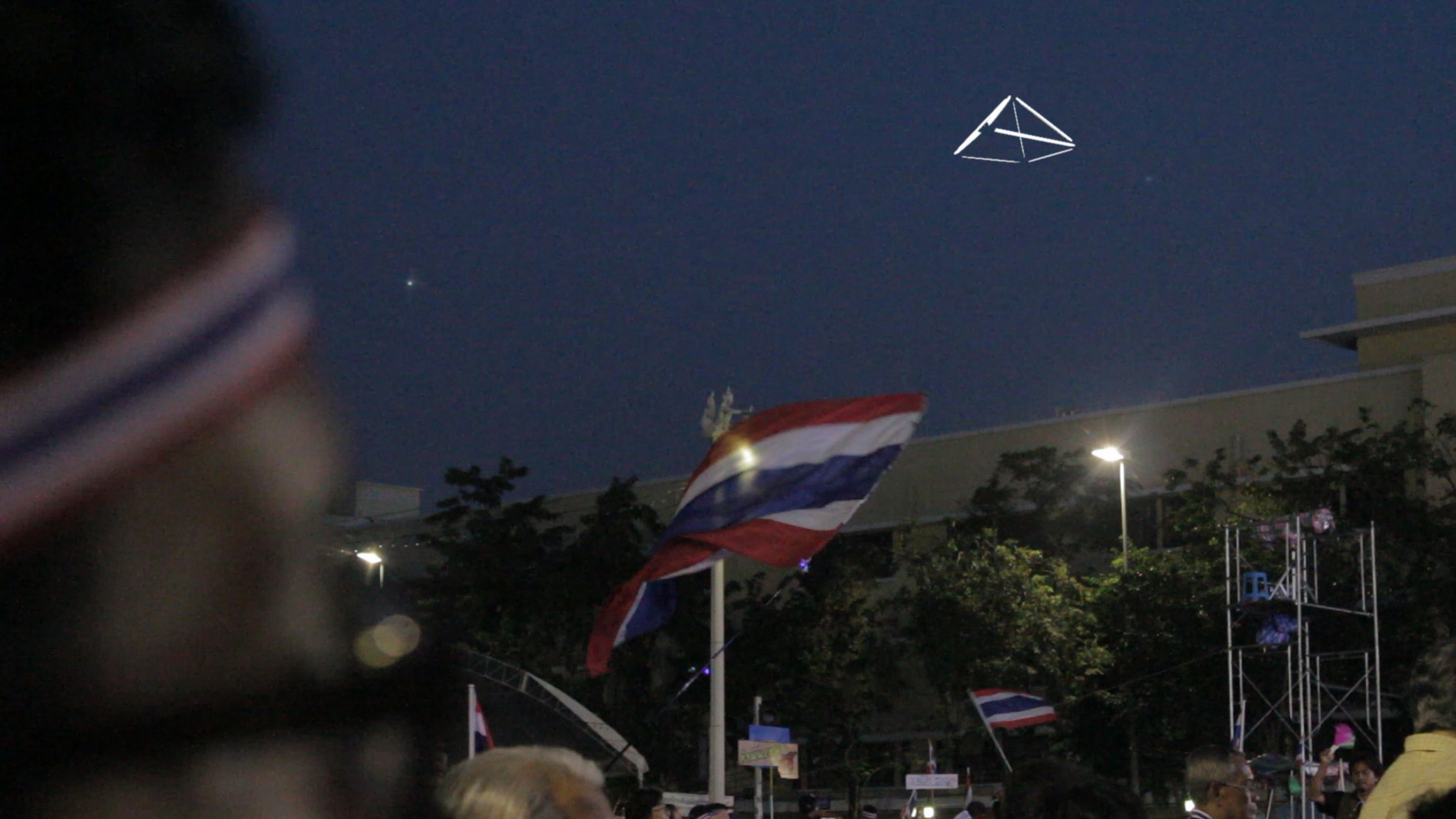
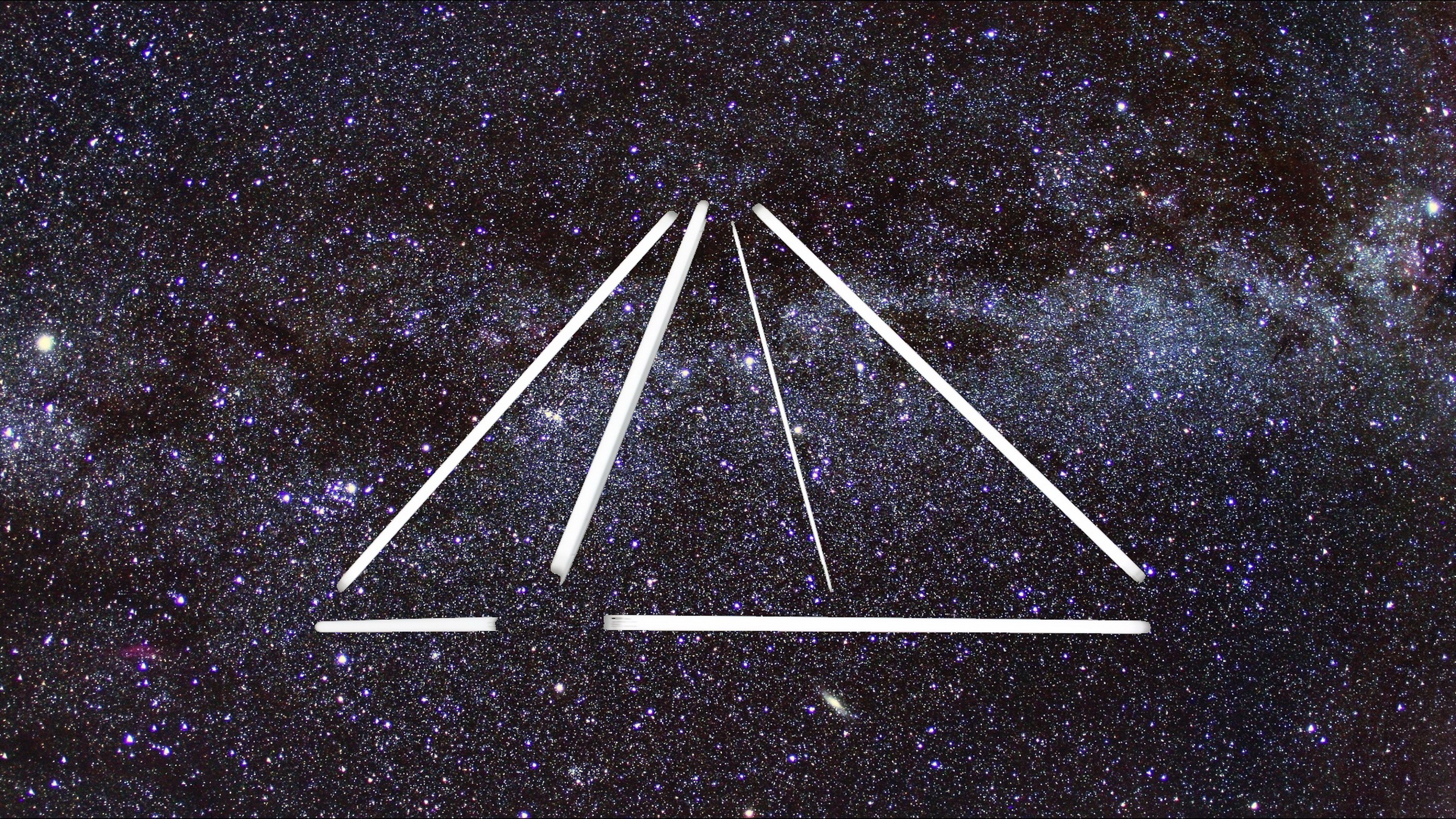
Chulayarnnon Siriphol Myth of Modernity 2014 (stills). Video, colour, sound, 16:00 min. Courtesy the artist and Bangkok CityCity Gallery
Chulayarnnon Siriphol
Spiritual buildings in Thailand, such as pagodas, palaces and spirit houses, are traditionally designed to represent a religious conception of the universe and our human position within it, specifically, the ‘three worlds’ of Buddhist cosmology. However, due to Western influence and the apparent need to ‘harmonise’ with modernity, Myth of Modernity (2014) shows how the architecture of these places of worship has become increasingly simplified to resemble pyramids. Filmed during the 2014 protests in Bangkok, Chulayarnnon Siriphol draws a parallel between religious ceremonies and the mass reverie of political rallies. The suggested flattening of both spiritual and political spheres expresses an underlying concern for the future effects of rapid development, globalisation and social change.


Takuro Kotaka Man from a Distant Planet 2018 (stills). 21:21, FHD, color, stereo. Courtesy the artist.
Takuro Kotaka
Man from a Distant Planet (2018) is a ‘sci-fi’ film was made in Patani, at Thailand’s southern border - an area prone to terror, violence, bombings, and repressive security responses. Takuro Kotaka worked closely with locals to understand their stories, daily life and issues that they face. What results is a ‘documentary’ in which a Japanese scientist arrives in an imaginary world where Aliens and Muslims exist side-by-side, played by Patani locals and the Japanese comedian Genki Iizo. Under the guise of a surreal and somewhat absurd search for aliens, this film talks about the serious and muted socio-political issues faced by communities in this area.
![]() Walking on Mars via virtual reality, Space Inspirium, Laem Chabang 2018. Photograph and lightbox. Courtesy Lauren Reid.
Walking on Mars via virtual reality, Space Inspirium, Laem Chabang 2018. Photograph and lightbox. Courtesy Lauren Reid.
Research images
In addition to the artworks in this exhibition, curator Lauren Reid presented scenes from her research. Here, the everyday and outer space collide, from the laboratory of the National Astronomical Research Institute of Thailand, to extraterrestrial believers camping on Kaokala in Nakhon Sawan.

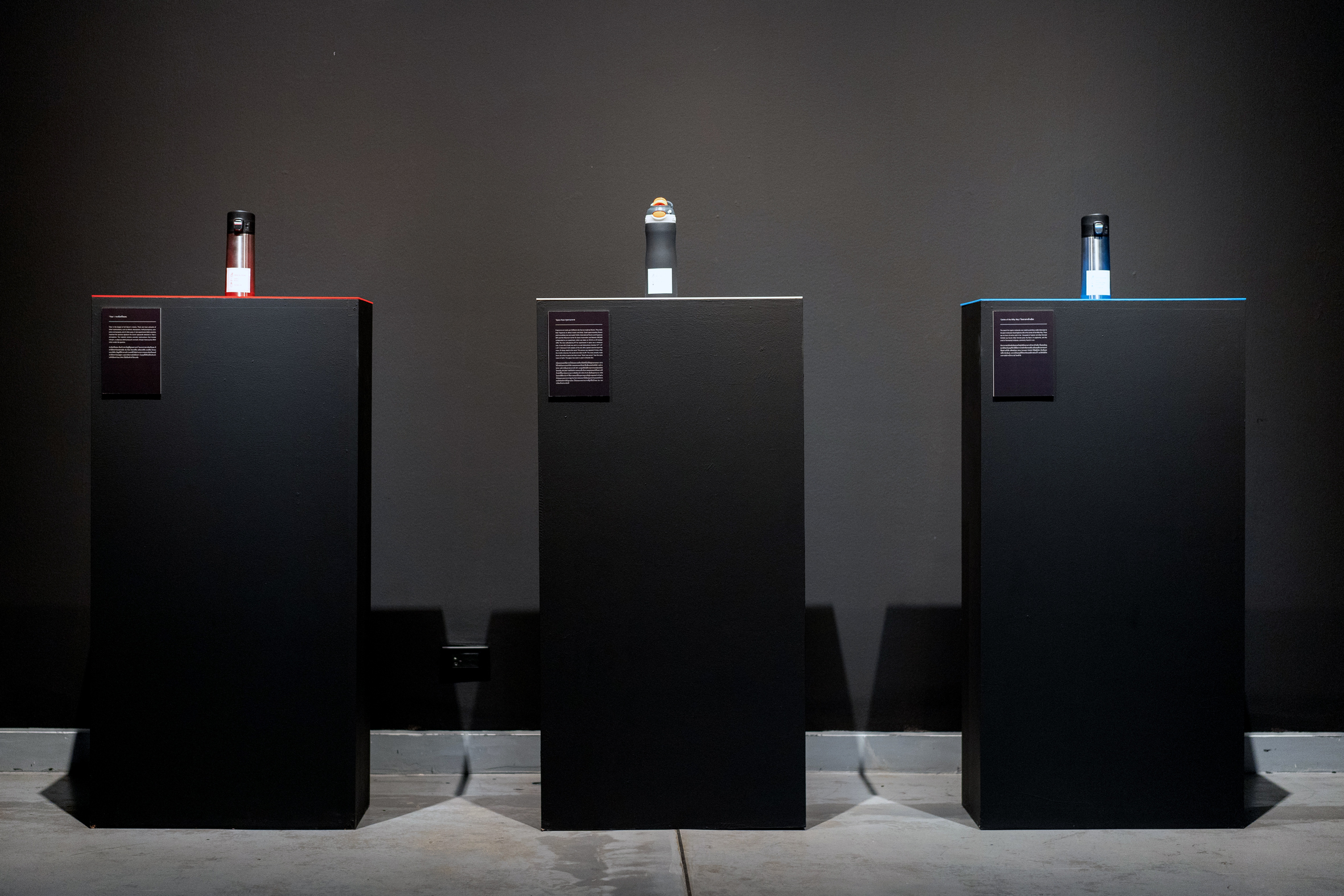
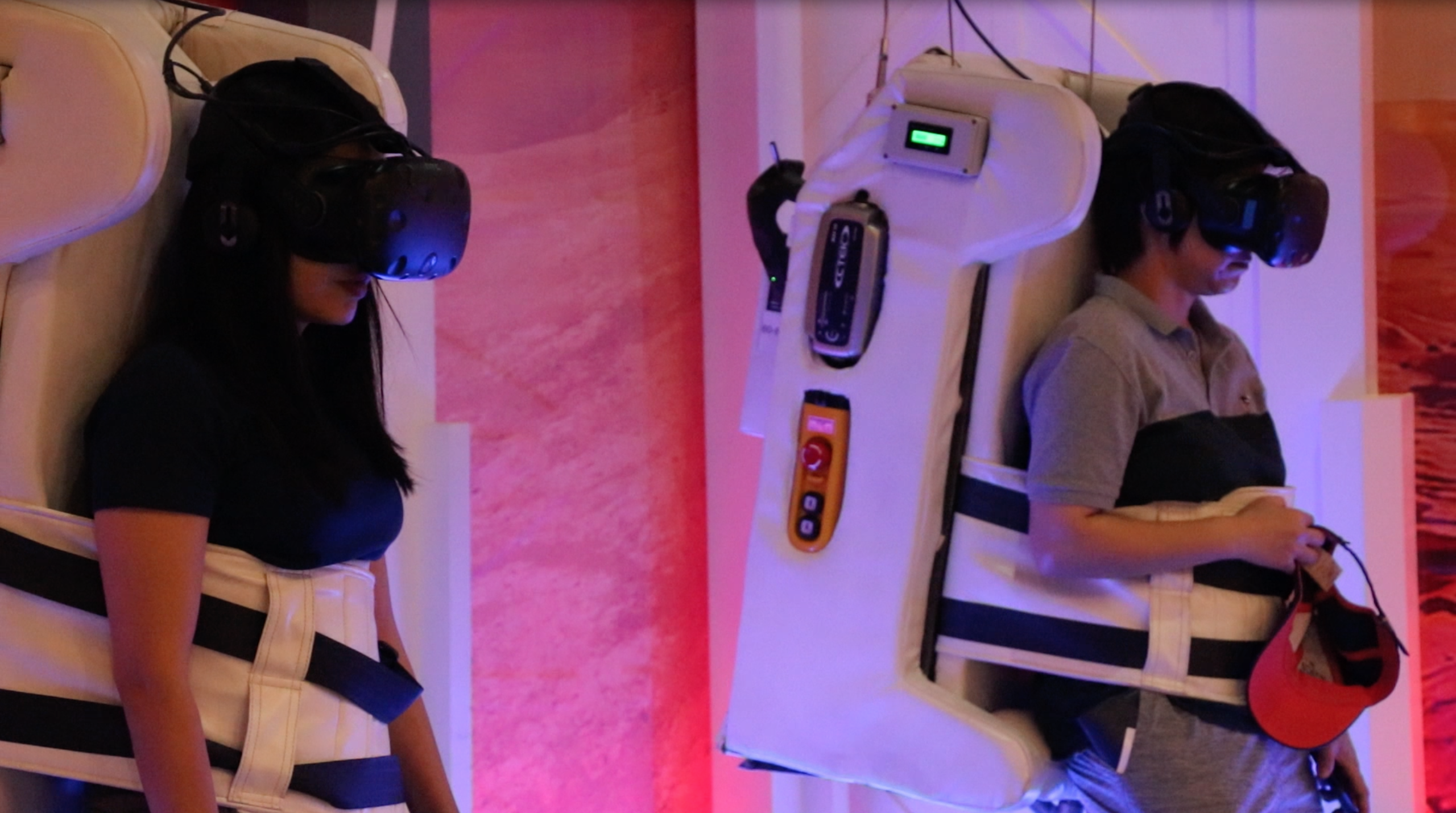 Walking on Mars via virtual reality, Space Inspirium, Laem Chabang 2018. Photograph and lightbox. Courtesy Lauren Reid.
Walking on Mars via virtual reality, Space Inspirium, Laem Chabang 2018. Photograph and lightbox. Courtesy Lauren Reid.